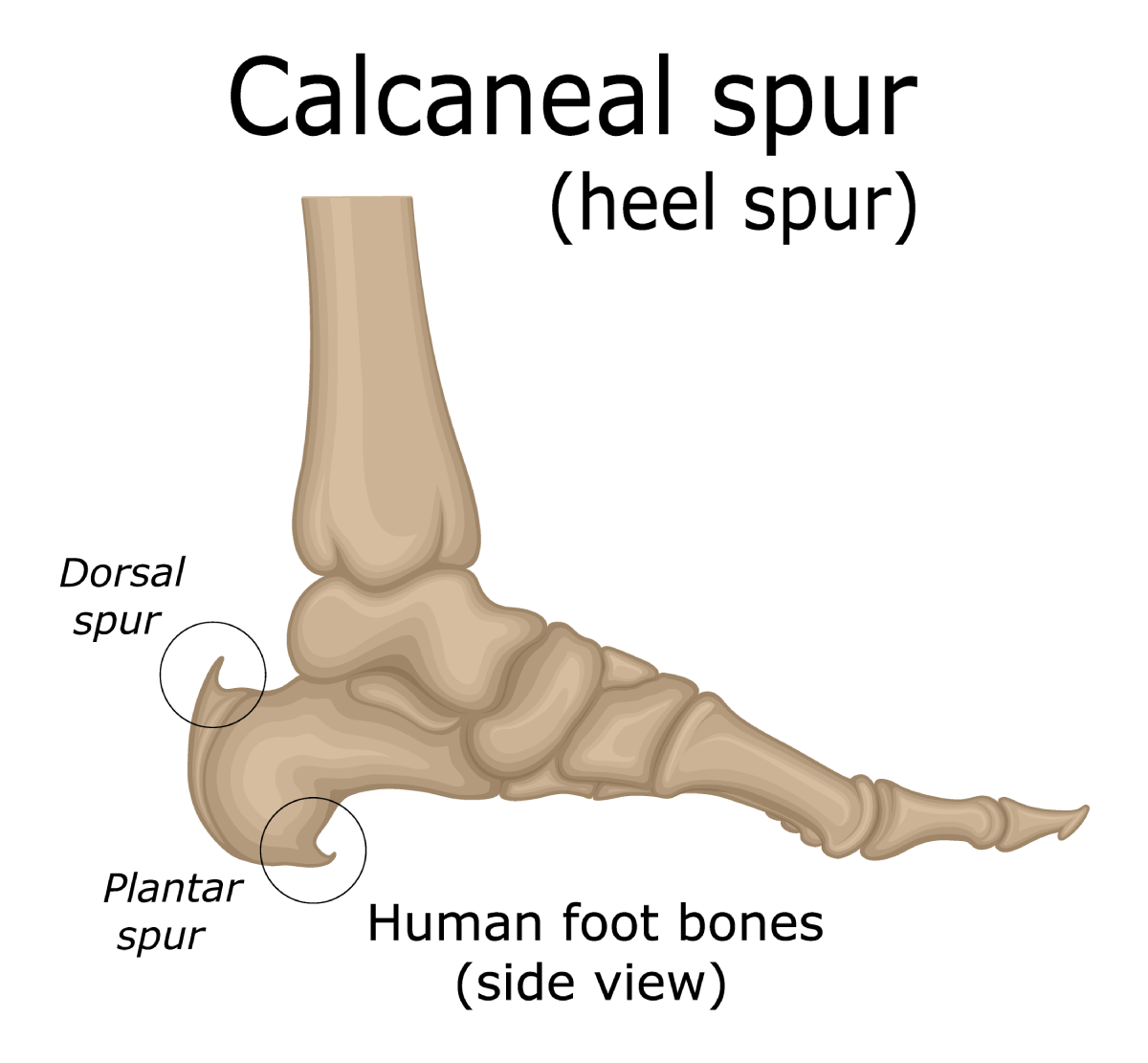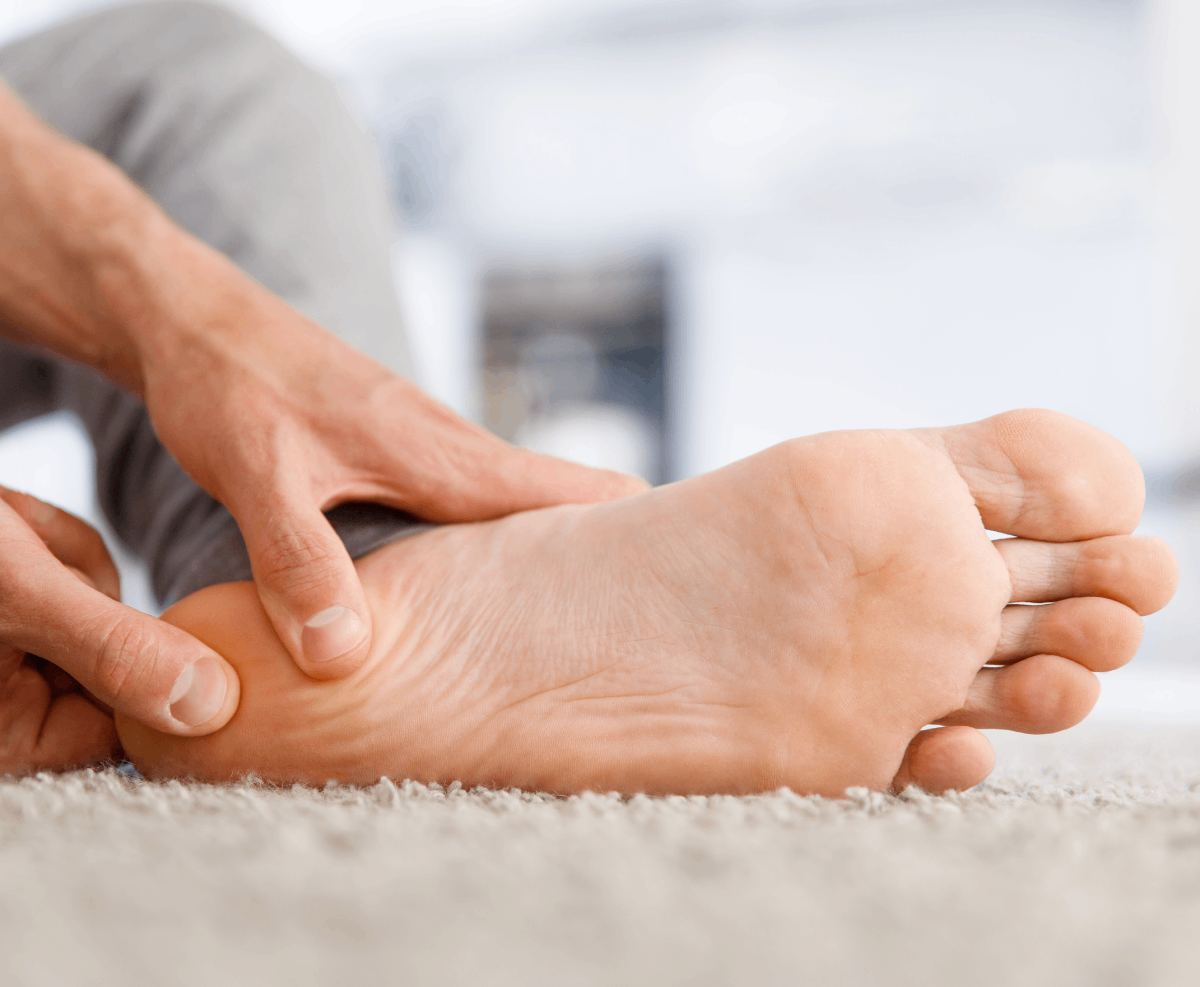Plantar Fasciitis
Disclaimer: Not medical or professional advice. Always seek the advice of your physician.
Plantar fasciitis is a common cause of stabbing pain in the foot's bottom that gets worse with increased activity. Pain and swelling provoke inflammation of the elastic tissues of the foot.
A Brief Overview of Foot Anatomy

The foot consists of 26 bones, muscles, blood vessels, tendons, and various fat layers. The calcaneus is the largest bone of the foot. The calcaneal tubercle connects the tendons and muscles. It also attaches the fascia - a special connective tissue in the shape of a bowstring that protects the leg from tension and stress.
The fascia functions as a shock absorber and supports the arch of the foot, helping the person to walk. Most often, serious tension occurs at the place where the plantar fascia is attached to the calcaneal tubercle.
Excessive pressure on the fascia (especially in case of poor running technique) eventually leads to the pulling of the bony membrane - the periosteum - from the bone itself. Therefore, the patient with fasciitis experiences severe pain in the inflamed area when stepping out of bed and taking the first steps of the day. After a few minutes of walking, the pain lessens, and the person can walk without much discomfort.
Causes of Plantar Fasciitis
The inflammatory process of fasciitis is similar to the velcro principle. One part (the periosteum) attaches to the fibers of the other part (plantar fascia) during a healing process at night. Then the first step in the morning leads to a fiber breakdown! The two pieces are torn apart again. The periosteum tries to attach to the bone whenever the foot is not on the ground. But the healing process is constantly interrupted when the patient puts stress on the problem area.
Basically, this disease affects middle-aged and elderly people. Due to extra pressure on the foot, weightlifters, ballerinas, and athletes are very familiar with fasciitis. But there are Other reasons for this disease.
- Wearing tight and high-heeled shoes for long periods of time.
- Osteochondrosis in the lumbar spine.
- Poor blood circulation in legs due to atherosclerosis.
- Excess weight.
- The high arch of the foot and flat feet are also dangerous factors.
- Diseases of the inflammatory and degenerative type (arthrosis and arthritis).
- Age-related changes can lead to thinning of subcutaneous adipose tissue in the heel area.
- Gout and diabetes mellitus thin the layer of tissue in the heel, which provokes the appearance of plantar fasciitis.
Symptoms of Plantar Fasciitis

The very first symptom of this disease is pain in the area of the calcaneus. The leg hurts the most in the morning. The patient usually tries to lessen the pain by raising his legs higher.
Generally, plantar fasciitis affects one foot, although it can occur on both feet.
Plantar fasciitis is also characterized by.
- Discomfort, foot pain gets worse over time.
- Increased pain in the foot when standing.
- Swelling of the heel.
For diagnosing plantar fasciitis, it is enough to visit an orthopedic trauma surgeon. In some cases, radiography or magnetic resonance imaging of the calcaneus is also necessary.
Treatment and Prevention of Plantar Fasciitis
Plantar fasciitis can be a serious problem that progresses to a chronic condition over time. Therefore, the longer you have this disease, the more difficult it is to treat it. To prevent fasciitis.
- Try to run not only on hard surfaces, use the stadium tracks, or run on grass and ground.
- Choose good shock-absorbing shoes and use orthopedic insoles (if you have a recommendation from an orthopedic surgeon).
- Maintain a healthy weight
- Strengthen the muscles of the ankle
The best way to avoid plantar fasciitis and any other injury is to strengthen the muscles, develop the elasticity of the fascia and the flexibility of the foot. Multiple studies show that stretching of plantar fascia and Achilles tendon is a more effective intervention for plantar fasciitis.